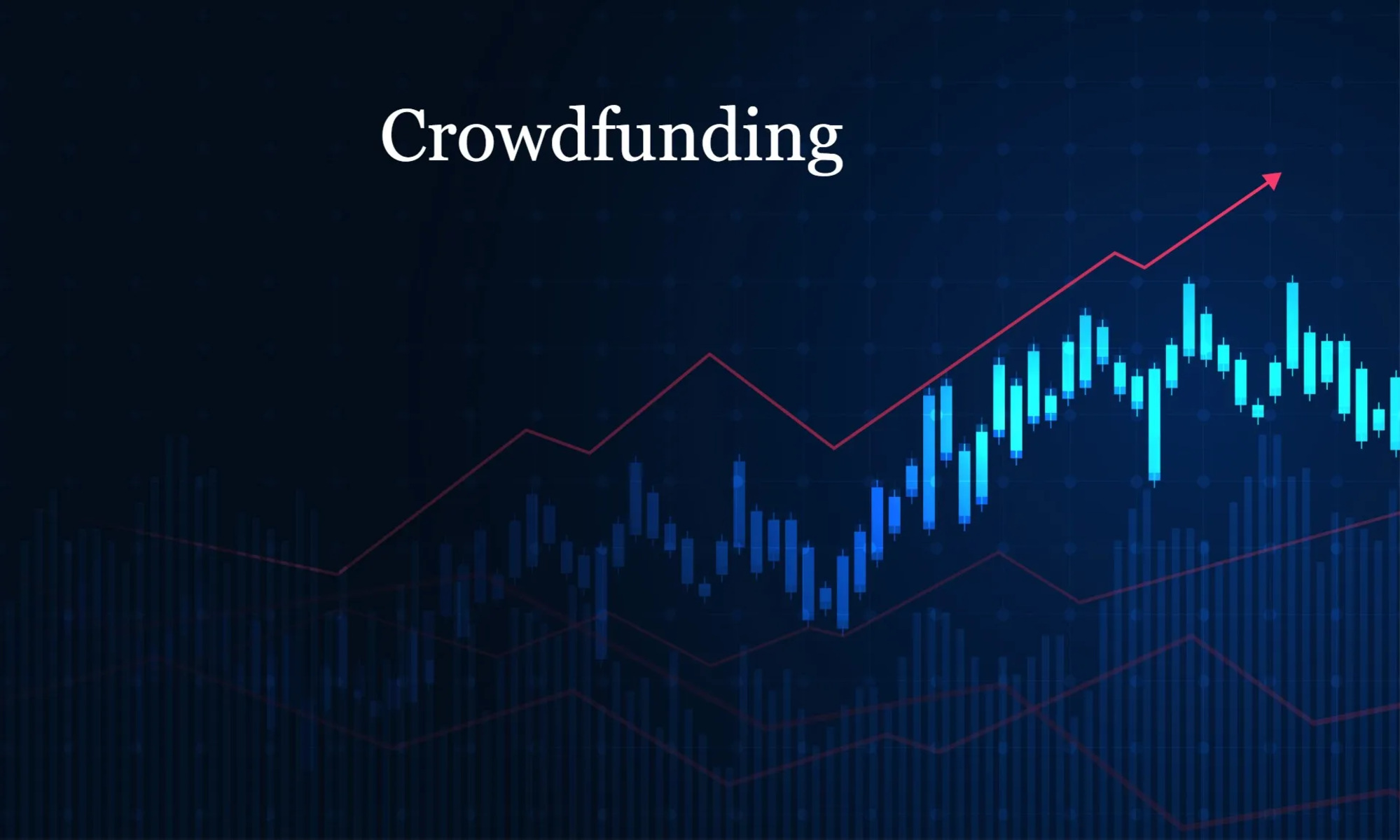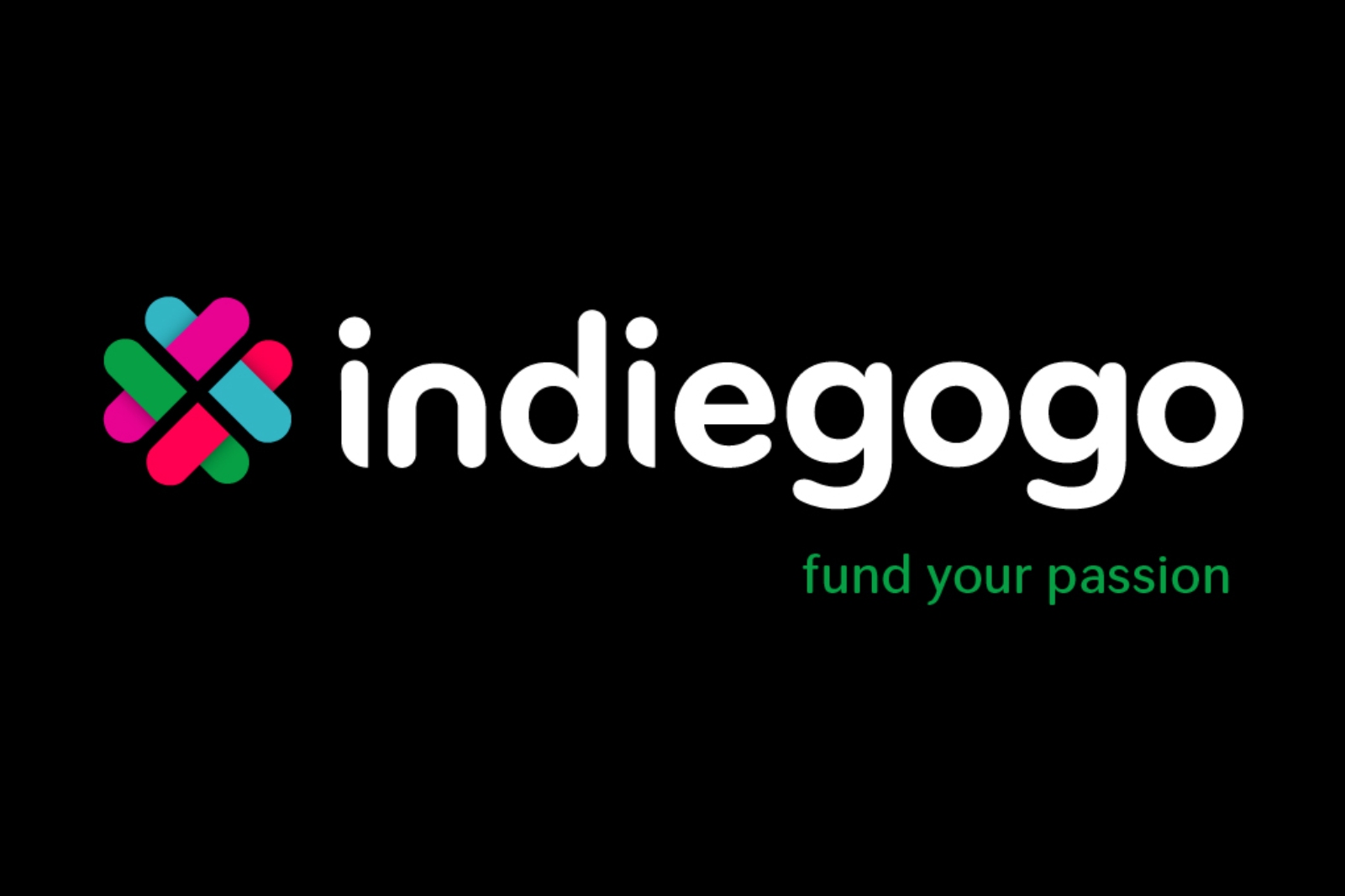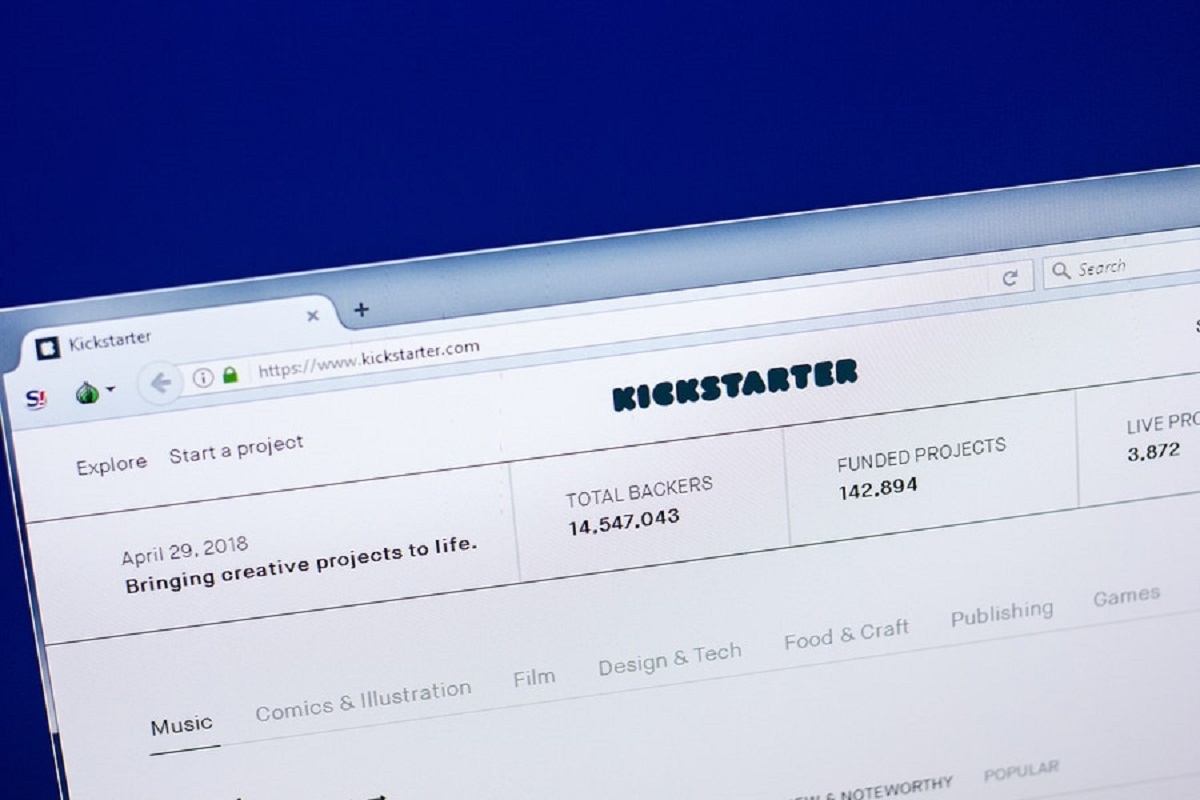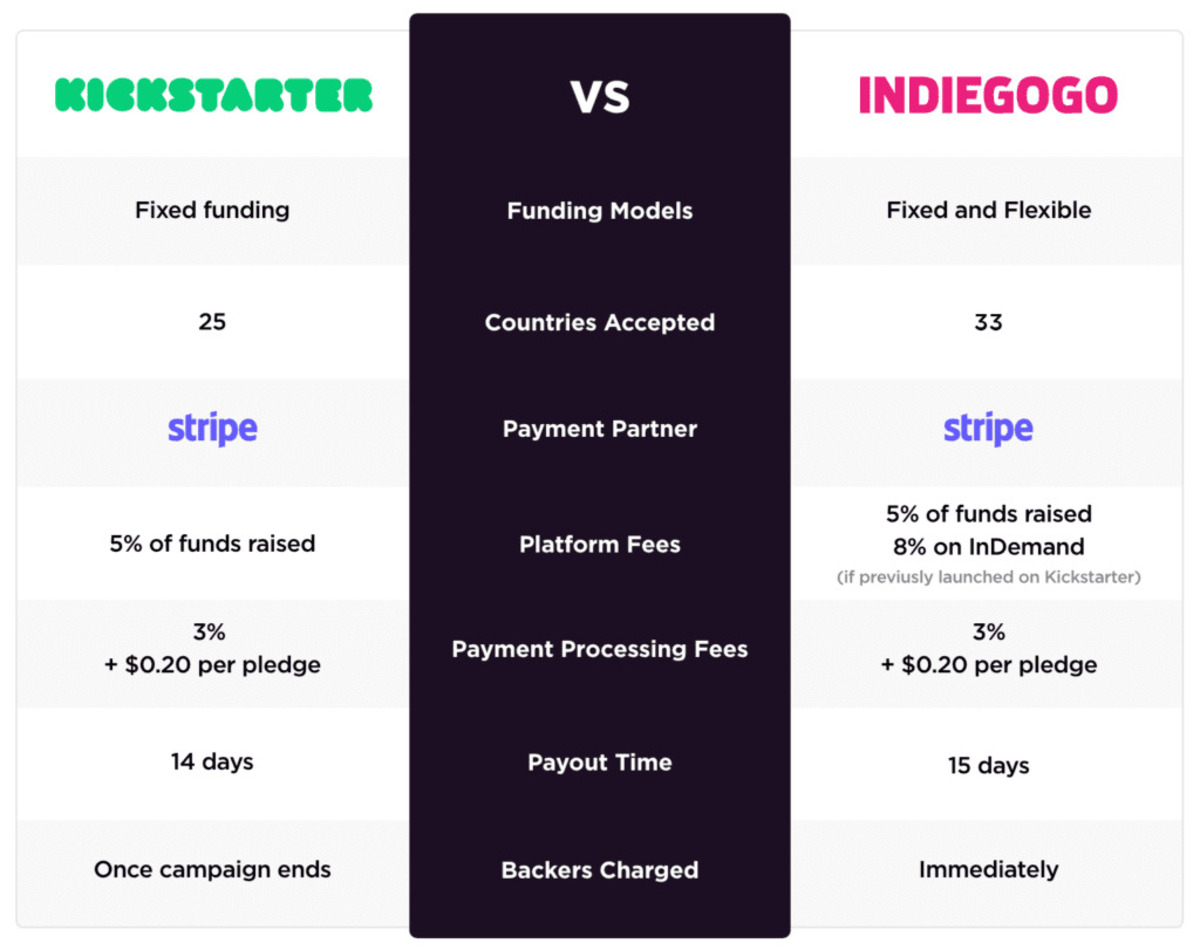What is a Crowdfunding Campaign?
A crowdfunding campaign is a fundraising strategy that allows individuals or businesses to raise funds for a specific project or venture. It involves reaching out to a large group of people, known as the crowd, through various online platforms and social media channels to solicit small contributions. In return, supporters often receive rewards or products related to the project. This innovative funding method has gained popularity in recent years, revolutionizing the way entrepreneurs and creative individuals bring their ideas to life.
Unlike traditional fundraising methods, such as seeking investments from venture capitalists or applying for loans, crowdfunding relies on the collective power of many small contributions. The concept behind it is simple: by harnessing the support of multiple backers, creators can gather the necessary funds to turn their vision into a reality.
Crowdfunding campaigns can cover a wide range of projects, including technology startups, creative endeavors like films or music albums, social causes, charitable initiatives, and even personal projects. It provides an opportunity for individuals and organizations to bypass traditional gatekeepers and directly engage with their target audience. By leveraging the power of social networks and online communities, creators can gain exposure, generate buzz, and attract potential backers who resonate with their ideas.
Many crowdfunding platforms, such as Kickstarter, Indiegogo, and GoFundMe, have emerged to facilitate these campaigns. These platforms typically provide a space for creators to share their project details, set a funding goal, and offer rewards or perks to incentivize backers. They also serve as a hub for communication between creators and supporters, enabling regular updates, sharing of progress, and fostering a sense of community.
Overall, a crowdfunding campaign is a unique approach to fundraising that empowers creators and connects them directly with their audience. It allows ideas to come to life while giving individuals the opportunity to support projects they believe in. This method has democratized the funding landscape, making it possible for anyone with a compelling idea and a dedicated following to raise the necessary funds to bring their dreams to fruition.
Why Crowdfunding?
Crowdfunding has become an increasingly popular method for individuals and businesses to raise funds for their projects, and for good reason. Here are several compelling reasons why crowdfunding has gained such widespread recognition:
1. Accessibility: One of the main advantages of crowdfunding is its accessibility. Traditional funding avenues often require extensive preparation, connections, and a proven track record. Crowdfunding, on the other hand, provides equal opportunities for both established entities and newcomers. It allows individuals with innovative ideas to showcase their projects to a wide audience and secure financial support without the need for extensive credentials or networks.
2. Market Validation: Launching a crowdfunding campaign allows creators to test the market demand for their product or idea. By presenting their project to the public and encouraging contributions, creators receive valuable feedback and can gauge the level of interest in their offering. This market validation can guide future business decisions and provide valuable insights before launching on a larger scale.
3. Direct Engagement: Crowdfunding fosters direct engagement between creators and potential customers or supporters. Through online platforms, creators can interact with their backers, gather feedback, and cultivate a community around their project. This direct connection can lead to long-term relationships, brand loyalty, and continued support for future endeavors.
4. No Repayment Obligations: Unlike loans or investments, crowdfunding typically does not require repayment or the relinquishment of equity. Supporters contribute to campaigns without expecting financial returns. Instead, they are often incentivized by project-related rewards or a sense of helping bring a meaningful idea to life. This eliminates the financial burden and pressure associated with debt or equity-based funding options.
5. Marketing and Exposure: Crowdfunding campaigns inherently involve marketing efforts to attract backers. Creators must showcase their project, create compelling content, and engage with their audience, leading to increased exposure and brand awareness. Even if a campaign does not meet its funding goal, the visibility generated can serve as a launchpad for future endeavors or attract potential investors or partners.
6. Creative Freedom: Crowdfunding provides creators with the freedom to pursue innovative and passion-driven projects. It allows them to transcend traditional funding limitations and explore unconventional or niche ideas that may not resonate with traditional investors. This creative freedom fosters a culture of innovation and empowers individuals to bring their unique visions to life.
Overall, crowdfunding offers numerous benefits that make it an attractive option for individuals and businesses seeking financial support. From accessibility and market validation to direct engagement and creative freedom, this fundraising method has transformed the landscape of entrepreneurship and creativity.
Time Needed for a Crowdfunding Campaign
Launching a successful crowdfunding campaign requires careful planning and a realistic understanding of the time involved. While the duration of a campaign can vary depending on the project and platform, here are the key factors that determine the time needed for a crowdfunding campaign:
1. Planning and Preparation: Before launching a crowdfunding campaign, thorough planning and preparation are crucial. This includes defining the project goals, identifying the target audience, creating compelling content, and setting realistic funding targets. The time needed for planning and preparation can range from a few weeks to several months, depending on the complexity of the project and the resources available.
2. Campaign Duration: The duration of a crowdfunding campaign plays a significant role in its success. Most crowdfunding platforms allow creators to choose the campaign length, typically ranging from 30 to 60 days. It is important to strike a balance between giving enough time for backers to discover and contribute to the campaign, while also creating a sense of urgency to encourage early support. A longer campaign may provide the opportunity for more exposure, but it can also lead to campaign fatigue and a decrease in interest over time.
3. Promotional Efforts: Promoting a crowdfunding campaign is vital to its success. Creators must invest time in spreading the word about their project through various marketing channels and engaging with potential backers. This includes creating engaging social media content, reaching out to influencers or media outlets, and leveraging personal networks. The time needed for promotional efforts can be substantial, with creators dedicating several hours each day to engage with the community and generate buzz.
4. Post-Campaign Activities: After a campaign ends, there are often post-campaign activities that require attention. This includes fulfilling rewards, providing updates to backers, and maintaining communication with the community. Depending on the size and complexity of the campaign, fulfilling rewards can take several weeks to several months. It is essential to allocate enough time to ensure a smooth post-campaign process and maintain positive relationships with supporters.
While there is no fixed timeframe for a crowdfunding campaign, it is generally recommended to dedicate a minimum of 3 to 6 months for the entire process, from planning to post-campaign activities. This timeline allows for adequate planning, effective promotion, and proper execution of the campaign. However, it is important to note that every project is unique, and the specific circumstances may require more or less time.
By carefully considering the time needed for each stage of the crowdfunding journey, creators can ensure that they have enough time to create compelling content, reach out to their audience, and achieve their funding goals. Remember, a well-organized and properly executed campaign can greatly enhance the chances of success.
Planning and Preparation
Planning and preparation are vital components of a successful crowdfunding campaign. Taking the time to strategize and lay a solid foundation is crucial for achieving your funding goals. Here are key steps to consider during the planning and preparation phase:
1. Define Your Project Goals: Clearly articulate the purpose and goals of your project. What problem does it solve? What value does it offer? Having a clear vision of your project’s objectives will help you communicate its importance and appeal to potential backers.
2. Research Your Target Audience: Understanding your target audience is essential for tailoring your campaign to their interests and preferences. Conduct market research to identify who your project appeals to and develop messaging that resonates with them.
3. Choose the Right Platform: Research and select the crowdfunding platform that aligns with your project’s genre and target audience. Platforms like Kickstarter, Indiegogo, and GoFundMe have unique features and attract different types of backers, so choose accordingly.
4. Set Realistic Funding Targets: Carefully consider the amount of funding you need to bring your project to fruition. Be realistic with your targets and break down the costs associated with production, marketing, shipping, and any other relevant expenses.
5. Craft an Engaging Campaign Story: Your campaign story should captivate potential backers and convey the essence of your project. Utilize storytelling techniques to evoke emotions and create a personal connection. Highlight the problem you’re solving, your passion, and why others should support your project.
6. Develop Compelling Rewards: Offer enticing rewards that align with the funding tiers. Make sure the rewards are unique, relevant, and appealing to your target audience. Consider exclusive perks, limited editions, or early bird discounts to create a sense of exclusivity and urgency.
7. Create a Professional Campaign Video: A high-quality campaign video can significantly enhance your campaign’s impact. Use it as a medium to showcase your project, share your story, and establish trust and credibility with potential backers. Ensure the video is concise, visually appealing, and effectively communicates the essence of your project.
8. Build a Marketing Strategy: Develop a comprehensive marketing plan to promote your campaign. Identify key channels, such as social media platforms, email lists, blogs, and relevant communities, to reach your target audience. Create compelling content, engage with your audience, and leverage influencers to expand your campaign’s reach.
9. Establish a Communication Plan: Determine how you will communicate with your backers throughout the campaign. Regular updates, answering questions promptly, and providing transparency build trust and keep backers engaged. Allocate time to maintain open lines of communication and address any concerns or inquiries.
10. Assemble a Supportive Team: Consider enlisting the help of a campaign manager or a team of individuals who can assist you in executing your campaign effectively. Delegating tasks, such as social media management, customer support, and logistics, can alleviate the workload and ensure smooth operations.
By dedicating ample time to planning and preparation, you set yourself up for success. Realistic goals, understanding your target audience, crafting compelling content, and devising a strong marketing strategy will greatly increase your chances of running a successful crowdfunding campaign.
Campaign Duration
The duration of a crowdfunding campaign is an important factor to consider for its overall success. While there is no one-size-fits-all answer, determining the ideal campaign duration requires careful consideration of various factors. Here are key points to keep in mind when deciding on the duration of your crowdfunding campaign:
1. Balance Between Time and Urgency: It is crucial to strike a balance between giving enough time for potential backers to discover and contribute to your campaign, while also creating a sense of urgency to encourage early support. A shorter campaign duration, such as 30 days, can generate a sense of urgency, pushing backers to act quickly. However, a longer campaign, such as 60 days, allows for more time to spread the word and gain momentum.
2. Platform Recommendations: Different crowdfunding platforms may have specific guidelines or recommendations regarding campaign duration. Some platforms may suggest a shorter campaign duration to maintain a sense of urgency and prevent campaign fatigue. It is important to review the platform’s recommendations and consider the platform’s community and user behavior when deciding on your campaign duration.
3. Project Complexity and Funding Goal: The complexity of your project and the funding goal can impact the duration of your campaign. If your project requires a significant amount of funding or involves a long production process, a longer campaign duration may be necessary to give yourself enough time to reach the target. Complex or high-ticket projects may require more time to persuade potential backers and build trust.
4. Marketing and Promotional Efforts: The duration of your campaign should align with the time and effort you can dedicate to marketing and promotional activities. Running a successful campaign requires consistent and ongoing promotional efforts, including engaging with your audience, reaching out to influencers, and sharing updates. Consider the resources and time available to you when deciding on the length of your campaign.
5. Backer Engagement and Sustainability: Campaign duration can influence the level of backer engagement and sustain the momentum of your campaign. A longer campaign provides more time for backer engagement, allowing for deeper connections and ongoing relationship building. However, it is crucial to sustain the momentum and keep backers engaged throughout the campaign to avoid losing their interest or attention.
Ultimately, there is no definitive rule for campaign duration, and the optimal length can vary depending on your specific project and circumstances. It is important to evaluate factors such as your project’s complexity, funding goals, available resources, and platform recommendations. Additionally, consider your ability to sustain marketing efforts and engage with potential backers throughout the campaign duration. By carefully considering these factors, you can determine the campaign duration that best suits your project and maximize your chances of achieving your crowdfunding goals.
Promotional Efforts
Promoting your crowdfunding campaign is crucial for its success. Without effective promotion, your project may go unnoticed, resulting in low funding or even failure. Here are key strategies and promotional efforts you can implement to maximize the visibility and success of your campaign:
1. Create Compelling Campaign Content: Develop engaging and persuasive content that tells your project’s story and communicates its value. Craft a captivating campaign page with a clear and concise overview, high-quality visuals, and compelling copy. It should resonate with your target audience and create a sense of excitement and urgency.
2. Leverage Social Media: Utilize various social media platforms to create buzz and promote your campaign. Identify the platforms that align with your target audience and develop a strategic content plan. Regularly share updates, behind-the-scenes content, and visually appealing images or videos to capture attention and encourage sharing.
3. Engage with Your Community: Actively engage with your online community and potential backers. Respond to comments, messages, and inquiries promptly, demonstrating your dedication and transparency. Engage in conversations that are relevant to your project, offer insights, and share your passion. This builds trust and fosters a sense of connection with your audience.
4. Collaborate with Influencers: Identify influencers or industry experts who align with your project’s theme or target audience. Collaborate with them to promote your campaign, either through sponsored content, guest blog posts, or social media shoutouts. Influencers can help expand your reach, introduce your project to new audiences, and lend credibility to your campaign.
5. Utilize Email Marketing: Leverage your email list to reach a targeted audience that has already shown interest in your work. Craft compelling emails that highlight the value and significance of your project. Consider offering exclusive perks or early access to incentivize supporters from your email list to contribute.
6. Engage in Outreach: Actively reach out to relevant media outlets, bloggers, or online communities to share your project. Craft personalized pitches that highlight the unique aspects and potential impact of your project. Seek opportunities for interviews, features, or guest contributions to increase visibility and generate buzz.
7. Run Paid Advertising Campaigns: Consider investing in paid advertising campaigns to reach a larger audience. Platforms like Google Ads, Facebook Ads, or Instagram Ads allow you to target specific demographics, interests, and geographical locations. Set a budget and monitor the performance of your ads to optimize their impact.
8. Offer Early-Bird Incentives: Create a sense of urgency and reward early supporters by offering exclusive early-bird incentives. This can be special discounts, limited-edition rewards, or additional perks for those who contribute within a certain timeframe. Early-bird incentives encourage backers to act quickly and increase the momentum of your campaign.
9. Collaborate with Your Network: Leverage your personal and professional network to generate support for your campaign. Reach out to friends, family, colleagues, and acquaintances, requesting their assistance in spreading the word and promoting your campaign. Word-of-mouth recommendations can be incredibly powerful in reaching a broader audience.
10. Keep Supporters Engaged: Throughout the campaign, provide regular updates to keep your backers engaged and informed about the progress of your project. Share milestones, production updates, and any positive news related to your campaign. Make backers feel like a part of the journey by involving them in the process and expressing gratitude for their support.
Remember that effective promotion requires consistency, creativity, and a genuine connection with your audience. By implementing these strategies and putting in the effort to promote your campaign, you increase the chances of reaching your funding goals and making your project a success.
Cost of a Crowdfunding Campaign
While crowdfunding can be an effective way to raise funds, it’s important to understand that there are costs associated with running a successful campaign. Here are the key elements to consider when estimating the cost of a crowdfunding campaign:
1. Setting a Budget: Start by defining a budget that encompasses all the necessary expenses for your campaign. This includes costs for video production, campaign page design, marketing materials, rewards, shipping, and any fees associated with the crowdfunding platform you choose.
2. Creating a Professional Video: A high-quality campaign video is vital for capturing the attention of potential backers. This may involve hiring a professional videographer/editor, scripting, shooting, and post-production. Video costs can vary based on the complexity and length of the video, the equipment used, and the professionals involved.
3. Hiring a Campaign Manager: Consider hiring a campaign manager who specializes in crowdfunding campaigns. They can provide expertise and guidance in crafting and executing your campaign strategy. Campaign managers typically charge a fee or require a percentage of the funds raised as compensation.
4. Additional Costs to Consider: There may be additional costs to consider depending on the unique needs and requirements of your campaign. These can include graphic design for campaign materials, website development or optimization, social media advertising, professional photography, and costs for fulfillment and shipping of rewards.
5. Crowdfunding Platform Fees: Most crowdfunding platforms charge a percentage of the funds raised as their platform fee. This can range from 5% to 10% of the total funds collected. It’s essential to factor in these fees when determining your funding goal and assessing the total budget needed for your campaign.
6. Payment Processing Fees: In addition to platform fees, payment processors, such as Stripe or PayPal, charge transaction fees for processing the funds received. These fees are typically a percentage of the total funds and can vary based on the platform or payment processor you choose.
It is crucial to carefully plan and consider these costs to ensure that you have the necessary funds to run a successful campaign. Here are a few strategies to manage the costs effectively:
1. Research and Compare: Take the time to research and compare the costs associated with different service providers to find the best value for your budget. Look for professionals or services that have experience working on crowdfunding campaigns and offer competitive pricing.
2. DIY Approach: If you have the skills and resources, you can opt for a DIY approach. This allows you to save costs by creating your video, designing campaign materials, and managing your marketing efforts in-house. However, it’s important to ensure that the quality and professionalism of the DIY approach still meet the standards required for a successful campaign.
3. Seek Pro Bono Help or Collaborations: Consider reaching out to industry professionals or freelancers who might be willing to provide their services pro bono or at a discounted rate in exchange for exposure or a percentage of funds raised. Collaborating with others who share a similar vision or project can also help share costs and efforts.
4. Plan Realistically: Set a realistic funding goal based on your estimated costs. It’s better to aim for an attainable goal and exceed it, rather than setting an unrealistic goal and falling short. This will help you cover your campaign expenses and have enough funds to fulfill your promises to backers.
When planning your crowdfunding campaign, take the time to thoroughly analyze the potential costs involved. By understanding and budgeting for these expenses, you can run a well-prepared campaign and increase your chances of success.
Setting a Budget
Setting a budget is a critical step in planning a crowdfunding campaign. It allows you to estimate the costs involved and ensure that you have the necessary funds to run a successful campaign. Here are key considerations when setting a budget for your crowdfunding campaign:
1. Determine Funding Goal: Start by determining the amount of funding you need to bring your project to fruition. Consider all the expenses associated with your project, including production costs, marketing materials, rewards, shipping, and any applicable fees. It’s essential to set a realistic funding goal that covers these expenses and allows for a buffer.
2. Research and Estimate Costs: Conduct thorough research to estimate the costs associated with different aspects of your campaign. For example, analyze the cost of video production, graphic design, marketing materials, and platform fees. Consider consulting with professionals in these areas to get accurate estimates for your specific project requirements.
3. Campaign Promotion and Advertising: Allocate funds for marketing and promotional efforts. This can include social media advertising, sponsored content, collaborations with influencers, and other marketing strategies to reach a wider audience. Set aside a portion of your budget for these activities to maximize the visibility and impact of your campaign.
4. Platform and Payment Processing Fees: Most crowdfunding platforms charge a percentage of the funds raised as their platform fee. Research and understand the fee structure of different platforms to determine the costs you’ll incur. Additionally, consider payment processing fees charged by platforms like Stripe or PayPal when estimating your budget.
5. Contingency Fund: It’s wise to set aside a contingency fund to account for unforeseen expenses or additional needs that may arise during the campaign. Having a buffer will help you handle unexpected costs without compromising the overall success of your campaign.
6. Reward Fulfillment and Shipping: If you’re offering rewards to your backers, consider the costs associated with fulfilling and shipping those rewards. This can include manufacturing costs, packaging materials, and shipping fees. Estimate these costs and factor them into your budget to ensure that you can meet your obligations to supporters.
7. DIY vs. Outsourcing: Consider whether you will handle certain tasks in-house or outsource them to professionals. Determine the costs and assess the quality of work that can be achieved through each option. For example, you may choose to create your own campaign video or design marketing materials to save costs, but hiring professionals in these areas can often yield higher quality results.
8. Fund Allocation: Once you have estimated all the costs involved in your campaign, prioritize the allocation of funds based on their importance and impact. Allocate a larger portion of your budget to elements that are critical for the success of your campaign, such as a high-quality video or targeted advertising.
Remember, setting a budget is not a one-time task. Review and revise your budget regularly as you gather more accurate estimates and assess the progress of your campaign. Be flexible and open to adjusting your budget as needed to ensure a well-funded and successful crowdfunding campaign.
Creating a Professional Video
A professional video is a crucial component of a successful crowdfunding campaign. It serves as a powerful tool to convey your message, capture attention, and engage potential backers. Here are key considerations when creating a professional video for your campaign:
1. Captivating Storytelling: Craft a compelling and concise story that effectively communicates the essence of your project and captures the interest of your audience. Highlight the problem you’re solving, the value your project brings, and why it’s worth supporting. Use storytelling techniques to evoke emotions and create a connection with viewers.
2. Clear Call to Action: Clearly define the action you want viewers to take after watching the video. Whether it’s contributing to the campaign, sharing it with others, or signing up for updates, make the call to action prominent and easy to follow. Encourage viewers to take action and become active participants in your campaign.
3. Professional Production Quality: Invest in professional video production to ensure high-quality visuals, audio, and editing. This helps convey a sense of professionalism and credibility. Hire a skilled videographer and editor who have experience in creating engaging videos that align with your project’s vision.
4. Visual Appeal: Use captivating visuals that showcase your project, product, or concept effectively. Incorporate high-quality images, animations, or footage that visually represent your idea. Ensure that the visual elements align with your brand aesthetics and create a visually appealing experience for viewers.
5. Concise and Engaging Length: Keep the video concise and engaging to maintain viewers’ attention. Aim for a duration of 2-4 minutes, as shorter videos tend to perform better. Focus on the most important and impactful aspects of your project, avoiding unnecessary details or lengthy explanations that can lose viewers’ interest.
6. Scripting and Storyboarding: Plan and script your video content in advance. This helps ensure that your message is conveyed clearly and effectively. Storyboarding can also help visualize the flow of the video, sequence your shots, and plan transitions. A well-planned video with a strong script can make the production process smoother and more efficient.
7. Authenticity and Connection: Be authentic and genuine in your video. Connect with viewers by expressing your passion and enthusiasm for the project. Demonstrate why you are personally invested in the project and convey your dedication to its success. Authenticity helps build trust and resonates with potential backers.
8. Showcasing Benefits and Rewards: Highlight the benefits that backers will receive by supporting your project. Showcase the rewards or perks associated with different funding tiers. Clearly communicate the value and exclusivity of these rewards to incentivize viewer participation and contributions.
9. Testimonials and Social Proof: Incorporate testimonials or endorsements from satisfied customers, industry experts, or influential figures. Social proof can help build credibility, trust, and confidence in your project. Include quotes, testimonials, or success stories that demonstrate the impact and value of your work.
10. Iteration and Feedback: Seek feedback from trusted individuals before finalizing your video. Gather insights and make necessary improvements based on constructive criticism. Iteration and refinement can help you create a video that effectively resonates with your audience and maximizes engagement.
Remember, a professional video enhances your project’s credibility, captures attention, and increases the chances of success in your crowdfunding campaign. Invest in high-quality production, storytelling, and visual appeal to create a video that captivates viewers and inspires them to support your project.
Hiring a Campaign Manager
Hiring a campaign manager can greatly benefit your crowdfunding campaign. A campaign manager brings expertise, experience, and a strategic approach to help you navigate the complex landscape of running a successful crowdfunding campaign. Here are key considerations when hiring a campaign manager:
1. Expertise and Experience: Look for a campaign manager who has specific experience in crowdfunding campaigns. They understand the intricacies of crowdfunding platforms, have knowledge of best practices, and can guide you through the entire process. Their expertise can help you strategize, optimize your campaign, and navigate any challenges that arise.
2. Strategy and Planning: A campaign manager can help you develop a comprehensive campaign strategy. They will work with you to set goals, identify your target audience, create a marketing plan, and determine the best approach to reach your funding objectives. Their strategic guidance will ensure that your campaign is well-structured and aligned with your project’s goals.
3. Execution and Project Management: Managing a crowdfunding campaign requires careful coordination and execution of various tasks. A campaign manager takes charge of overseeing all aspects of the campaign, from creating campaign materials to monitoring progress and engagement. They ensure that tasks are completed on time and that the campaign runs smoothly throughout its duration.
4. Marketing and Promotion: Campaign managers excel in marketing and promotional efforts. They can develop and implement effective marketing strategies to expand your campaign’s reach, engage with potential backers, and drive traffic to your campaign page. They are skilled in utilizing social media platforms, email marketing, influencers, and other channels to generate maximum exposure for your project.
5. Communication and Community Management: Engaging with your backers and maintaining clear communication is vital for a successful campaign. A campaign manager can handle customer inquiries, provide timely updates to backers, and actively engage with the community. Their skills in community management and customer support contribute to creating a positive and interactive campaign experience.
6. Optimization and Adaptation: Throughout the campaign, a campaign manager continuously monitors the progress and performance of your campaign. They analyze data, identify trends or areas of improvement, and make necessary adjustments to optimize your campaign’s effectiveness. Their ability to adapt strategies based on real-time insights helps maximize your campaign’s chances of success.
7. Networking and Connections: Campaign managers often have established networks and connections within the crowdfunding community. They can leverage these connections to generate additional exposure for your campaign, collaborate with influencers or media outlets, and tap into relevant communities that align with your project’s niche.
8. Cost Consideration: When hiring a campaign manager, consider the budget you have allocated for your campaign. Campaign managers often charge a fee or require a percentage of the total funds raised as compensation. Assess the value they bring to your campaign and ensure that their fees are justifiable based on their expertise and the potential impact they can make on your campaign’s success.
Remember, hiring a campaign manager can alleviate the workload, provide strategic guidance, and increase the overall effectiveness of your crowdfunding campaign. An experienced campaign manager brings expertise, industry knowledge, and a dedicated focus to optimize every aspect of your campaign and help you achieve your fundraising goals.
Additional Costs to Consider
When planning your crowdfunding campaign, it’s important to be aware of additional costs that may arise throughout the process. These costs can vary depending on the nature of your project and the specific requirements of your campaign. Here are some key additional costs to consider:
1. Graphic Design and Branding: Investing in professional graphic design can greatly enhance the visual appeal and branding of your campaign. This includes creating a captivating campaign page design, eye-catching visuals, logos, banners, and other promotional materials. Budget for the services of a graphic designer who can create cohesive and visually appealing assets for your campaign.
2. Website Development or Optimization: If you plan on having a dedicated website for your campaign, allocate funds for its development or optimization. This may involve hiring a web developer or designer to create an attractive and user-friendly website that complements your campaign. Factor in costs for hosting, domain names, security certificates, and any necessary maintenance or updates.
3. Social Media Advertising: While organic social media efforts are important, you may also opt to invest in social media advertising to expand the reach and visibility of your campaign. Set aside a budget for running targeted ads on platforms like Facebook, Instagram, or Twitter to reach a wider audience and attract potential backers who may not have discovered your project otherwise.
4. Professional Photography: High-quality photos can significantly enhance the visual appeal of your campaign. If your project involves physical products or showcases visuals that need professional photography, budget for the services of a skilled photographer. This may include product photos, lifestyle shots, or behind-the-scenes images that effectively convey the uniqueness and value of your project.
5. Copywriting and Content Creation: Compelling and well-crafted copy is essential for engaging potential backers and effectively communicating your project’s message. Hiring a professional copywriter can help ensure that your campaign page, social media posts, and other written content resonate with your target audience. Consider budgeting for copywriting services to create engaging and persuasive content that increases the chances of conversion.
6. Fulfillment and Shipping: If your campaign involves physical rewards, allocate funds for fulfillment and shipping costs. This includes manufacturing or producing rewards, packaging materials, shipping fees, and tracking services. Remember to consider international shipping costs, as they can vary significantly depending on the destination. Accurately estimating these costs is essential to avoid potential financial strain during the fulfillment stage.
7. Legal and Compliance: Depending on the nature of your project, there may be legal and compliance considerations to keep in mind. This can include copyrights, trademarks, licenses, permits, or legal advice on intellectual property protection. Consult with legal professionals to ensure that your campaign adheres to all relevant laws and regulations and allocate budget for any necessary legal fees.
8. Contingency Fund: It’s always wise to have a contingency fund in place to account for unexpected expenses or adjustments that may arise during your campaign. Sudden changes in production, marketing strategies, or unforeseen challenges can occur. Setting aside additional funds for contingencies helps mitigate potential risks and ensures that you have a buffer to handle unexpected costs.
Be proactive in identifying potential additional costs that may arise during your campaign. It’s crucial to plan and budget accordingly to ensure that you have the necessary funds to run a successful campaign, fulfill promises to backers, and overcome any unforeseen challenges that may arise along the way.
Conclusion
Running a successful crowdfunding campaign requires careful planning, strategic execution, and a thorough understanding of the costs and efforts involved. By considering the various aspects discussed in this article, you can set yourself up for a crowdfunding campaign that has the potential to reach its funding goals.
Understanding the essence of a crowdfunding campaign, why it has become a popular funding method, and the time and effort required is crucial. Taking the time to plan and prepare, determine a suitable campaign duration, and invest in promotional efforts will significantly increase your chances of success.
When setting a budget, consider all the costs associated with your project, including video production, campaign materials, marketing expenses, and platform fees. Allocate funds for each aspect and be mindful of any additional costs that may arise throughout the campaign.
Investing in a professional video is key to capturing the attention of potential backers. Craft a compelling story, ensure high production quality, and showcase the benefits and rewards of supporting your project. A professionally produced video can serve as a powerful tool in conveying your message and generating interest in your campaign.
Hiring a campaign manager can provide invaluable expertise, strategic guidance, and project management skills. Consider their experience, marketing knowledge, and ability to optimize your campaign for maximum effectiveness when deciding to hire one.
Remember to account for additional costs, such as graphic design, website development, social media advertising, professional photography, and legal considerations. Having a contingency fund is also essential to handle unexpected expenses or challenges that may arise during your campaign.
Running a crowdfunding campaign is a dynamic and rewarding process. Continuously monitor and adapt your strategies, engage with your audience, and maintain open lines of communication to ensure the success of your campaign.
By incorporating these key elements and thoroughly planning your crowdfunding campaign, you can increase your chances of reaching your funding goals, bringing your project to life, and building a strong community of supporters. Good luck with your crowdfunding journey!












![How Does Crowdfunding Work? [Beginner-Friendly]](https://robots.net/wp-content/uploads/2020/07/How-does-crowdfunding-work-300x212.jpg)












